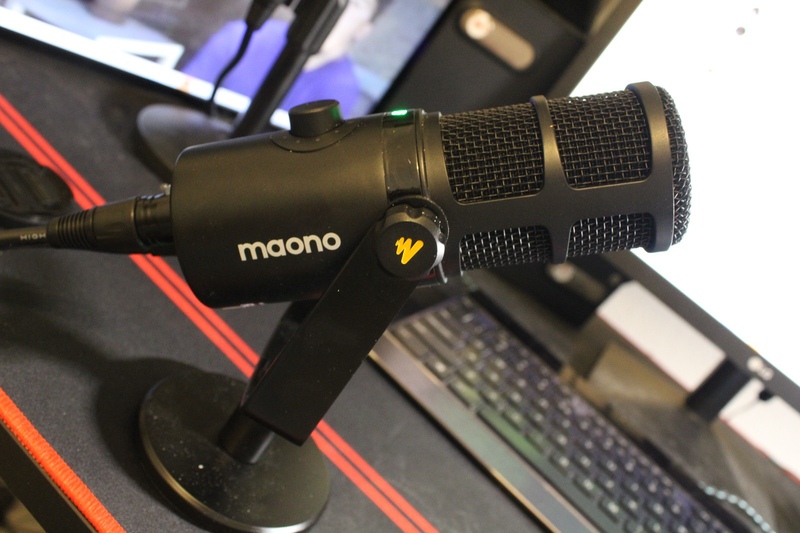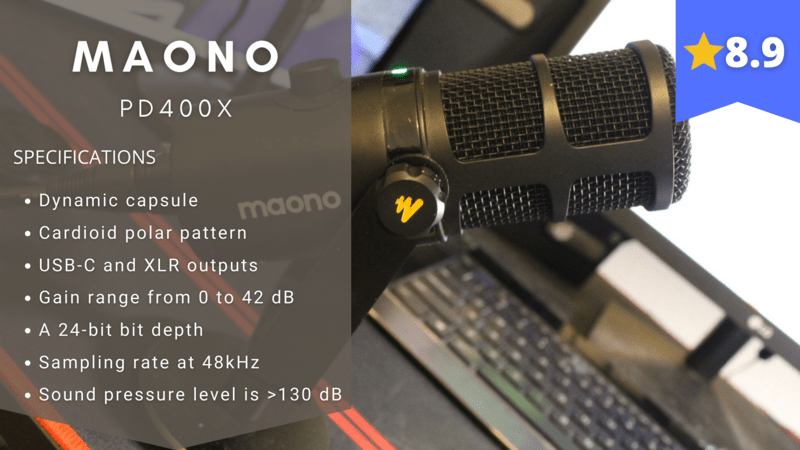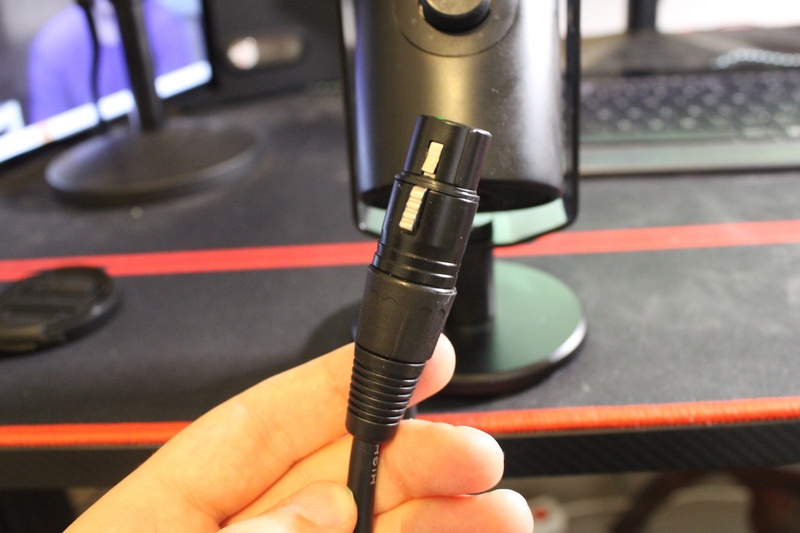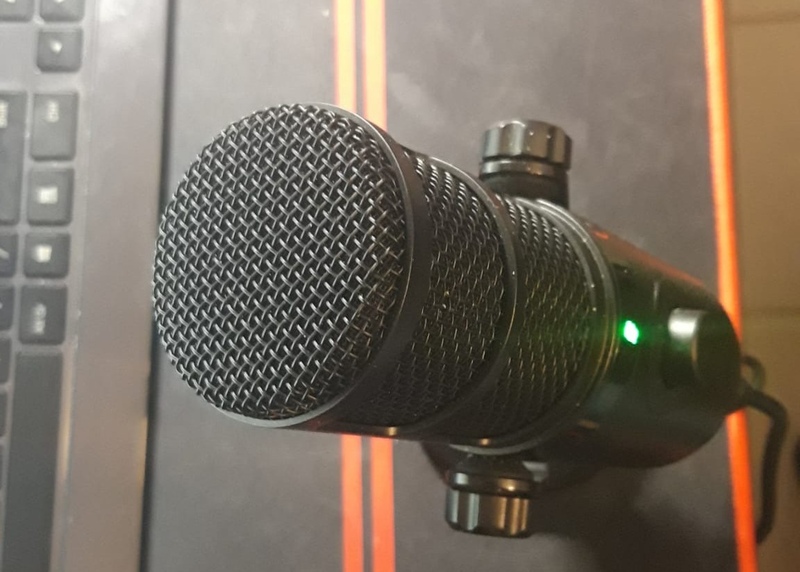When you’re creating or updating your podcasting or streaming kit, choosing the right microphone will be the most important task.
As you will see in this Maono PD400X review, this microphone could be the best choice for you, and I think that its cardioid audio output and simplicity have a lot to do with that.
So, let’s get right into it and find out what benefits this microphone will bring to your podcast or stream!

Table of Contents
Maono PD400X Review
Specs, Features, and FAQ

Stefan’s Take:
I’ve thoroughly tested this mic for multiple purposes while making several videos, podcasts, and a few live streams.
What I liked the most about it is how simplified the control and adjustment are with Maono Link software. Everything you need can be adjusted in the software interface, so I didn’t have to fiddle with the microphone itself too much.
Also, I was easily able to change the settings on the go while recording, which is extremely important because when you’re making a video or podcast, you want your viewers to hear everything loud and clear. Sometimes, there are unexpected interferences though, which require you to make some adjustments. This was quite simple to achieve with this mic.
| Audio Quality | 9 |
|---|---|
| Sensitivity | 8.5 |
| For Streaming? | 9 |
| Value | 9 |
Pros
- Comes with dual configurations
- Compatible audio processing software is included
- The headphone jack is built-in
- Great smart knob functions
Cons
- Output can come out a bit quiet
Maono PD400X Features
The Maono PD400X has some of the regular features that you would expect from a dynamic microphone made mainly for podcasting, but it also has some that were proven to be great for streaming too.
Here is what stood out to me the most and what you should definitely be looking into if you decide to go for this mic.
XLR/USB Dual Mode
When it comes to the output options, this microphone is a dual output mic, meaning that it has both the XLR and USB output.

With the dual mode, you have the option to record something digitally and as an analog recording.
Devices that this microphone can be connected to include mobile devices, desktops, and standard audio interfaces.
Also, you can work with these simultaneously, recording with XLR and USB mode at the same time; you just have to know that some of the functions don’t work with the XLR cable, like phantom power.
To change between these options, you just have to control the button that’s on the bottom of the microphone.
I found this pretty easy to navigate, but I have to say, I did miss having some of the features while doing the USB and XLR recording simultaneously.
Not having the phantom power function means that a lot of cables have to come into play, so that would be the main downside.
Maono Link Software
Maono has its own software for controlling its microphones, and it’s called Maono Link Software.
It’s very easy to download, as you only have to go to a page on their official website here and download either the Windows or the Mac version.
Here are the important steps to follow when you work with Maono Link:
- After the download is done, connect the mic to the computer using the included USB-C cable.
- Maono will recognize the device now, and the window will open for this software.
- You will see various adjustment features, including mute, RGB on/off, microphone gain level, and headphone volume.
- Most of the features have a slider that you can use to control them, so to change any of them up, you just have to play around with the sliders until you find out what works for your recording.
The interface of this software is very easy to work with, I found it very intuitive, and I would say that it doesn’t have much to do with the fact that I have worked with similar software before.
Also, being able to control most of the options on the software, rather than having to fiddle with the microphone itself all of the time, made the recording process much easier.
Multi-Function Compound Knob
The reason why this mic has such a simple design is because of the one compound knob that you use to control several different functions.
With this one knob, I was able to adjust the monitor mix, microphone gain, as well as headphone volume.
This is not something that’s commonly seen among podcasting microphones, and they usually tend to have multiple knobs for different settings.
If you don’t need to have all of that on physical knobs, and you work just fine with doing most of the adjusting through the software, then this one will come in quite handy.
Probably my favorite feature of this knob is the fact that it can control both the microphone and the headphones, and switching between these two modes requires only pressing and holding the knob for one second.
Dynamic Capsule

Microphones with dynamic capsules are microphones that work on electromagnetic induction, meaning that no phantom power will be necessary when you try to connect it.
The other kind of microphone capsules are condenser capsules, and when choosing between dynamic vs condenser mic, you should know that dynamic capsules have many benefits.
First and foremost, they are very easy to handle.
Also, a dynamic mic will be able to work even when changes in the magnetic field are occurring, which is a process that has to happen in order for the mic to have a frequency response.
Dynamic mics have been proven to work for a way longer time, and they are extremely durable, which comes from their stiffness and fairly rigid structure.
All of these benefits of a dynamic microphone polar pattern have been very useful with the Maono PD400X mic, so you will get that with this one.
Real-Time Monitoring
Both the smart knob on this dynamic microphone and the software make it possible for you to monitor and adjust the features in real-time while you’re recording or streaming.
Even though this microphone is mainly marketed as a podcasting mic, this option makes it a great dynamic mic for streaming.
You can have your stream go on and change things up in the settings as the camera is rolling and broadcasting your stream.
I didn’t find it hard, nor particularly complicated, to control everything, so I wouldn’t say that that would be a problem.
Just remember, to be able to fully control the mic while you’re doing something like that, you have to stay in the digital recording mode with the USB output instead of the XLR port.
1-Tap Mute
The one-tap mute feature comes from the mute button that this microphone has.
I liked this feature mainly because it will work the way it’s supposed to, no matter what setup you’re working with.
When you want to mute the mic, you should make sure that the indicator light goes from green to red.
When you want to take it back and have the mic unmuted, just press the button again and wait for the indicator light to go from red to green.
Conclusion
Overall, this is a very good microphone for both streaming and podcasting, and what’s for sure is that it will last you quite a long time.
While I wouldn’t say that the high price point is completely justified, I can say that if you had the money to invest in your streaming equipment, this would be a good product to spend your money on.
FAQ
Is Maono Link available on iOS or Android?
The Maono Link software is available as a mobile device version as well. You can find download links here.
Can I use mute in XLR mode?
When working in the XLR mode, a lot of the microphone functions become unavailable, as this is the way to record an analog audio file.
This means that the mute option can’t be used while working with XLR mode.
Do I have to install Maono Link to use PD400X?
The Maono PD400X can be used with any kind of audio interface and microphone control software, not only the Maono Link.
So, in case this software doesn’t work for you, you will be able to use it with any other preference that you have.

